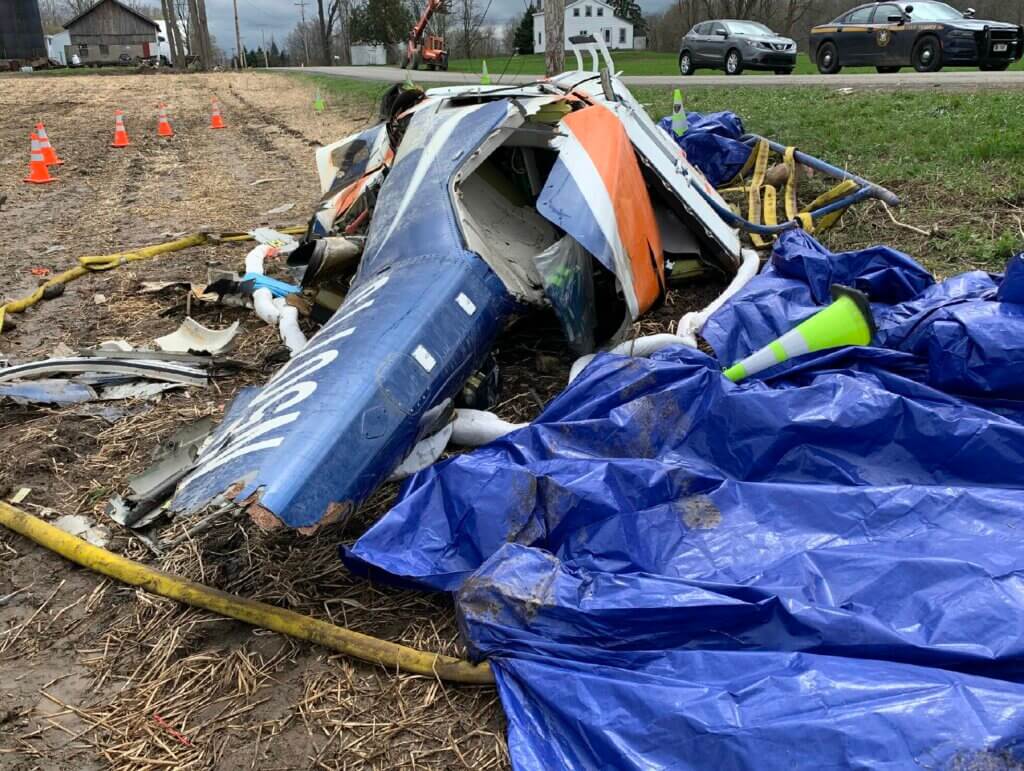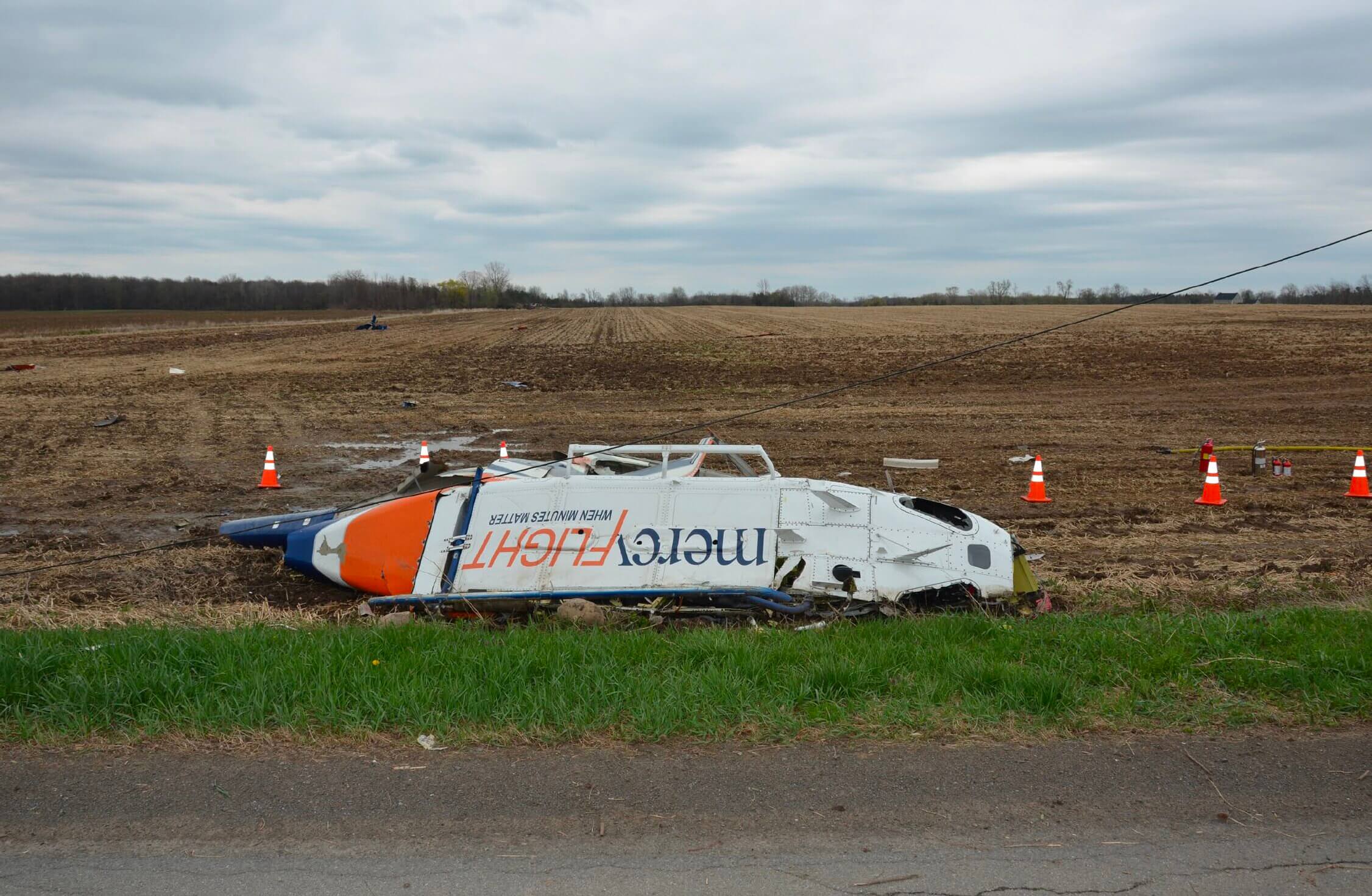
The fatal in-flight breakup of a Mercy Flight Bell 429 during a vortex ring state (VRS) recovery training flight was caused by abrupt control inputs — as well as the instructor’s inadequate monitoring of the flight, the final report into the crash has found.
Pilot James E. Sauer and Bell instructor Stewart Dietrick were both killed in the accident, which took place during the second training flight of the day on April 26, 2022, near Elba, New York.
The National Transportation Safety Board (NTSB) said the experience of the pilot who performed the day’s first flight helped inform their understanding of the crash.
The pilot on that first flight said Dietrick told him to perform a recovery from VRS during the training session, which he successfully did. He then asked the pilot to fly the maneuver again, and during this second entry into VRS, the aircraft developed a very high descent rate.
According to the NTSB record of the interview with the pilot, he said the thought the aircraft was falling at a rate of 1,800 feet per minute during the second VRS recovery manuever, while Mercy Flight normally trained to a limit of 1,000 feet per minute.
“The pilot stated that he didn’t know why they were going so deep into VRS and that the instructor was just sitting there, ‘hands on his lap,’ ” the NTSB’s final investigation report states. “The pilot, feeling uncomfortable at that point, had to exit this very high descent rate on his own rather than waiting for further guidance from the instructor pilot.”

During the accident flight, data showed the helicopter performing training maneuvers for about an hour and a half before the accident. Seconds before the accident, it was “operating within the VRS envelope” the report states.
“This was consistent with the instructor directing the accident pilot to enter VRS for training purposes,” investigators noted.
Shortly afterwards, “multiple abrupt control inputs” were recorded, including forward cyclic and then, within one second, nearly full aft cyclic — as well as a simultaneous full-down on the collective and increasing left pedal.
The airspeed decreased from 26 knots to 9 knots, with the aircraft’s vertical descent rate increasing from 800 to 1,300 feet per minute.
The report said the abrupt inputs likely resulted in the main rotor blades hitting the tail rotor, causing in-flight breakup of the helicopter.
A traditional recovery from VRS is through increasing airspeed and/or partially lowering collective to exit the vortex.
Another method is the Vuichard recovery technique, developed by Swiss pilot Claude Vuichard. This requires an increase in collective and left pedal input to maintain heading, while simultaneously applying right cyclic, then back to level flight.
The NTSB report highlights that a Vuichard exit method for VRS requires opposite side pedal to the lateral cyclic position.
“From the data analysis, the cyclic position was mostly aft and right while the pedal position was also to the right side before the rapid aft cyclic input,” it states.
Investigators noted there was no evidence of mechanical failures that would have prevented the aircraft recovering from VRS, so they couldn’t determine the reason for the abrupt movements on the controls.
“Given the contextual commentary from the pilot of the previous training flight, it is likely the flight instructor did not provide adequate information to the accident pilot on how he would receive training for VRS, to include how they would identify, enter, and exit VRS,” the report states.









